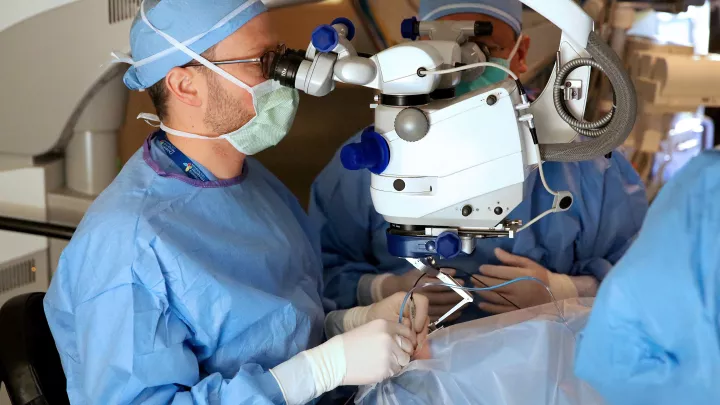Research Topics
- Synaptogenesis
- Neural circuit formation
- Retinal development
- 3-dimensional retinal organoids
- Inherited retinal disorders
Overview
The development and maintenance of specific synaptic connections between retinal neurons is critical to its function. However, our understanding of neural circuit formation in the human retina remains limited. Within the last 10 years it has become possible to grow 3-dimensional, multi-layered retinal organoids derived from human stem cells. This advance permits the study of human retinal development and the establishment of synaptic connectivity. Our goal is to elucidate mechanisms underlying synapse formation and specificity in the first synapse of the human visual system. Access to patient-derived organoids allows us to understand this process in the disease state and following novel treatment paradigms such as gene therapy and cell-based therapy. We utilize a variety of techniques including live fluorescent imaging, electrophysiology, and gene editing in stem cell-derived human retinal organoids. The long-term goal of this work is to understand how synaptic connections are established and maintained in the human nervous system.
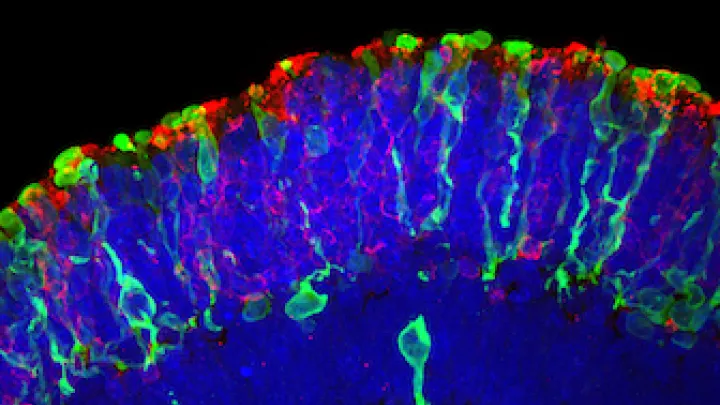
Section of a human retinal organoid with rod (red) and cone (green) photoreceptors aligned along the photoreceptor layer.
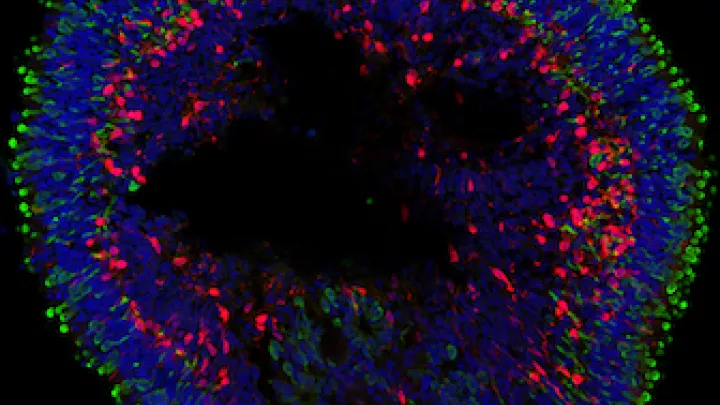
Cones (green) and depolarizing bipolar cells (red) align along the photoreceptor layer and inner nuclear layers, respectively.
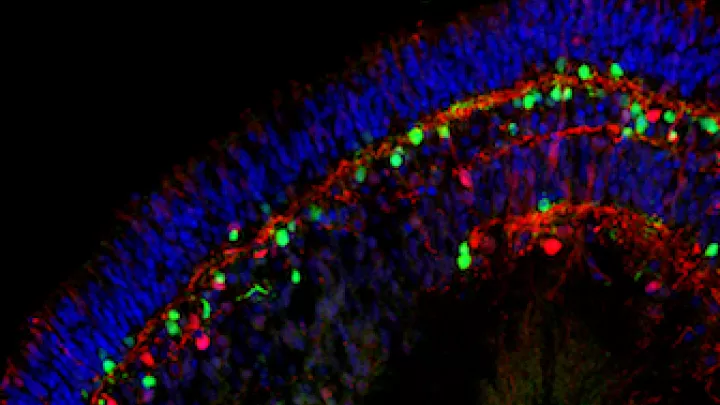
Bipolar cell dendrites (green) coexist with horizontal cells and their processes (red) along the outer plexiform layer.
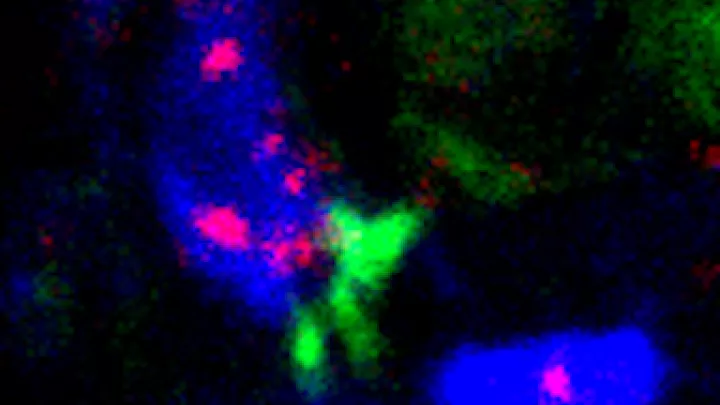
High-magnification of a cone (blue) to depolarizing bipolar cell (green) synapse with the ribbon synapse protein bassoon labeled in red.
Selected Publications
Nagiel A, Andor-Ardó D, Hudspeth AJ. Specificity of afferent synapses onto plane-polarized hair cells in the posterior lateral line of the zebrafish. J Neurosci. 28 (34): 8442-53, 2008. PMID: 18716202; PMCID: PMC2665254.
Gleason MR, Nagiel A, Jamet S, Vologodskaia M, López-Schier H, Hudspeth AJ. The transmembrane inner ear (Tmie) protein is essential for normal hearing and balance in the zebrafish. Proc Natl Acad Sci U S A. 106 (50): 21347-52, 2009. PMID: 19934034; PMCID: PMC2781060.
Nagiel A, Patel SH, Andor-Ardó D, Hudspeth AJ. Activity-independent specification of synaptic targets in the posterior lateral line of the larval zebrafish. Proc Natl Acad Sci U S A. 106 (51): 21948-53, 2009. PMID: 19996172; PMCID: PMC2790364.
Schwartz SD, Tan G, Hosseini H, Nagiel A. Subretinal transplantation of embryonic stem cell-derived retinal pigment epithelium for the treatment of macular degeneration: An assessment at 4 years. Investigative Ophthalmology & Visual Science. 57 (5): ORSFc1-9, 2016. PMID: 27116660.
Publications on PubMed
Funding
The Saban Research Institute and the Las Madrinas Endowment for Experimental Therapeutics for Ophthalmology



